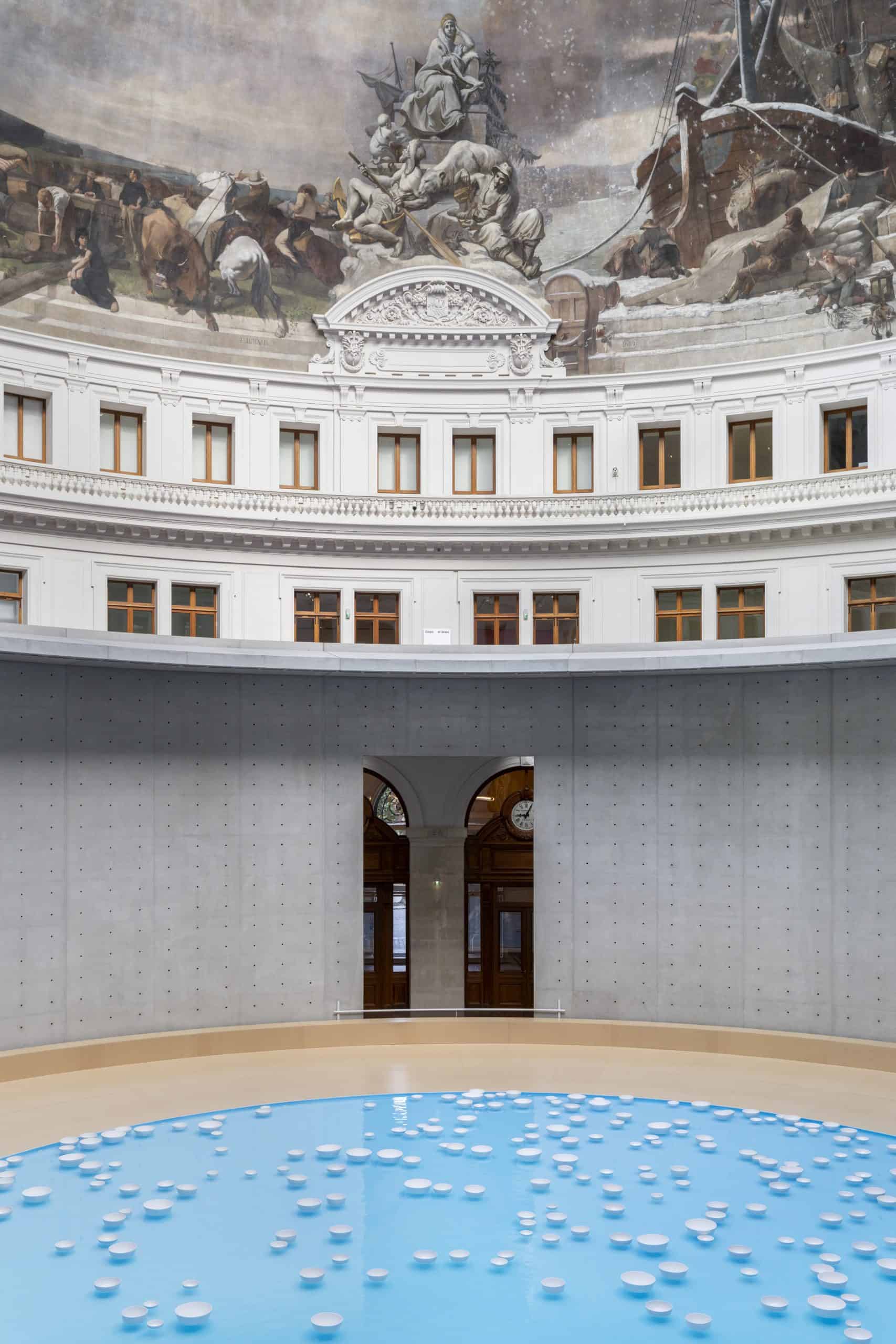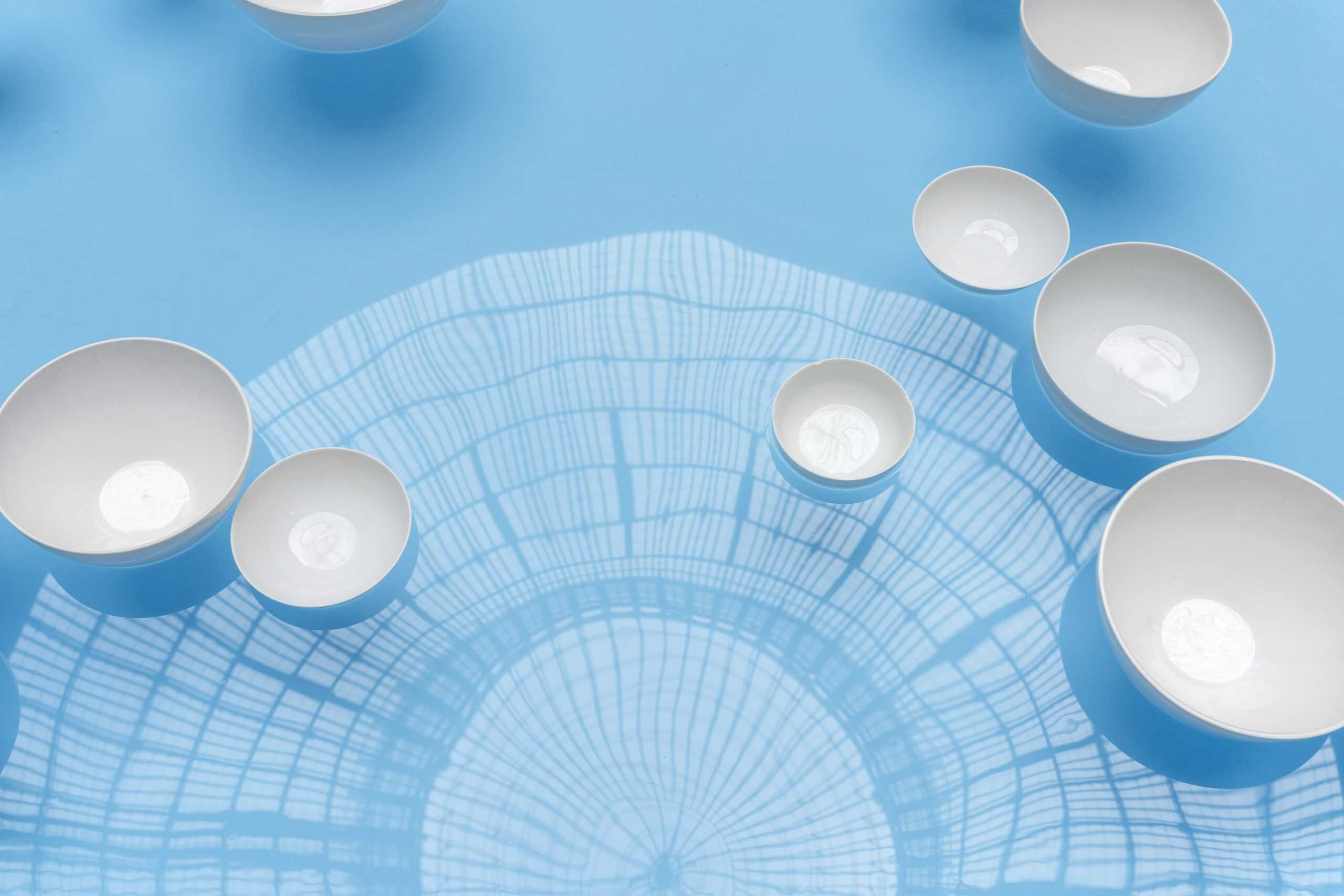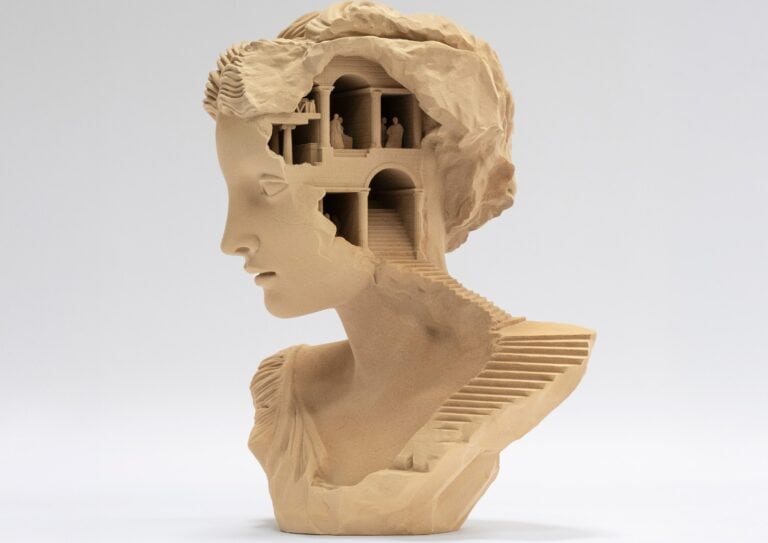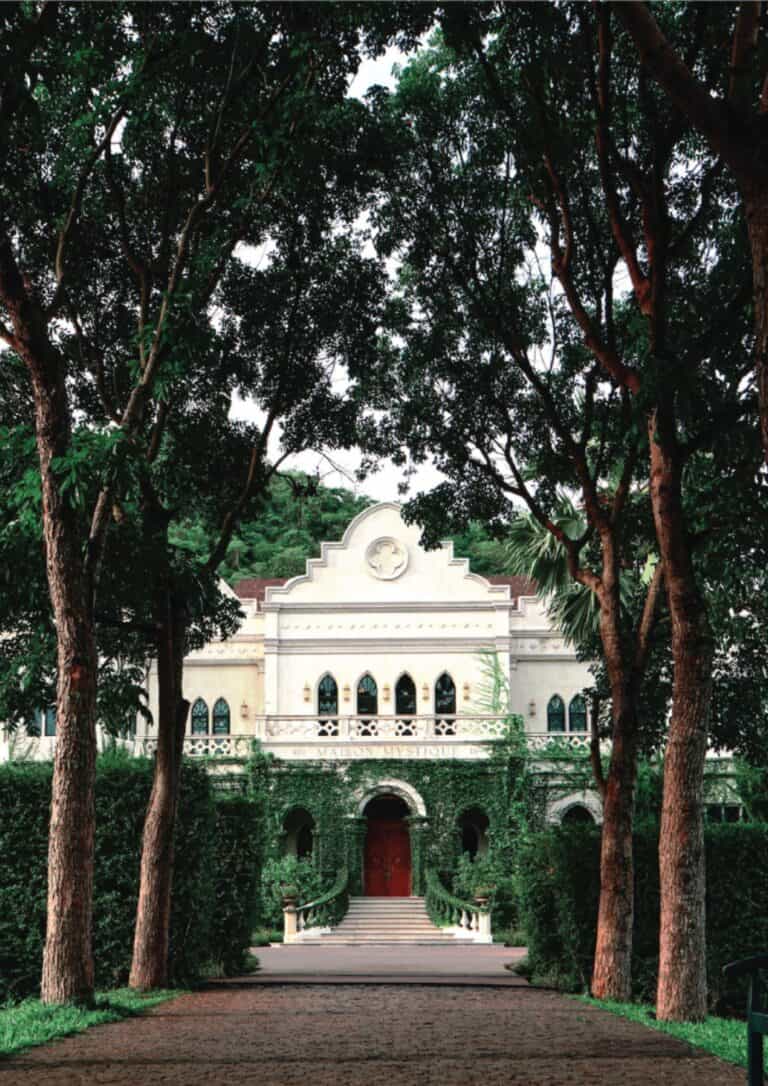
WHEN CLINAMEN BECOMES A SYMPHONY
Marie Loire Moulin
When Clinamen becomes a symphony, Céleste Boursier-Mougenot hears chaos in stillness. Inside the Bourse de Commerce, porcelain becomes philosophy. When the ancient Greeks spoke of “clinamen,” they meant a slight swerve, an unpredictable deviation. It explained how atoms escaped perfect order to bring the universe to life. Today, Céleste Boursier-Mougenot reclaims that word in a world obsessed with precision.
When Chaos Finds Harmony
The rotunda of the Bourse de Commerce is already cinematic. Circular, echoing, celestial. Into it, Boursier-Mougenot installs an 18-meter basin of blue. A soft tide ripples beneath hundreds of porcelain bowls. Each one drifts, collides, sings. This isn’t performance, it’s emergence. The artist lets go, and sound arises without intervention. Visitors step into silence, and then hear resonance.

Courtesy of Finn Partners.
Boursier-Mougenot, the art of unintentional chance
The bowls’ random contact generates melody, but it’s never the same twice. However, this is not a score it’s infinite. Because no one is playing, no one is in control. The atomist Lucretius called clinamen the spark of creation. It allowed particles to meet. In fact, Boursier-Mougenot updates that logic: randomness as beauty. He transforms ancient physics into musical poetics.
The listening body
There are no screens, no speakers, no wires. Everything comes from water, ceramics, and air. While immersive art often leans digital, clinamen turns back toward tactility, time, and the body. Visitors speak in whispers, and children sit without being told. Instinct takes over, and as soon as you pause, the piece responds. Sound is sculptural: one bowl taps another, a note shivers through the dome. You don’t just hear clinamen, you feel it in your ribs, in your breath.
Boursier-Mougenot’s final resonance
When Clinamen becomes a symphony it isn’t a spectacle, it’s surrender. In a curated city, Boursier-Mougenot offers something rare: radical gentleness. Stillness becomes a symphony. The bowls speak if we listen.
For another take on how movement becomes meaning, discover The Moving Memory Project’s poetic return to NYC.
Share this post
Marie Loire Moulin approaches fashion as an immersive language—one that expresses identity, character, and cultural influence. Echoing Jean Cocteau’s observation that “Fashion is what goes out of fashion,” Moulin embraces the paradox at the heart of her craft. For her, fashion is a living, breathing art form—constantly deconstructed, reimagined, and reshaped in response to the world around it.
What fuels Marie Loire’s creativity is the ability to blend worlds—to explore the intersections of fashion, technology, history, and art. She is inspired by how these disciplines collide to generate experiences that are not only visually compelling, but also deeply purposeful.
Moulin is particularly drawn to artistic expressions that serve as bridges—linking cultures, fusing tradition with innovation. Sustainability, for her, is not a buzzword but a foundation. She sees it as a long-term commitment to thoughtful creation, not a passing aesthetic.
As a stylist working with actors on film sets, Marie Loire thrives on transforming a director’s vision into living, breathing characters. Through wardrobe and silhouette, she builds atmospheres that tell stories—stories of emotion, intention, and presence.
Her creative drive extends into virtual reality and immersive art, where she explores how emerging technologies can shift perception and spark connection across cultural boundaries. For Moulin, the digital realm is just another canvas—one that, when used with care, has the potential to resonate as powerfully as the physical world.
Whether on set or in virtual space, Marie Loire seeks originality and depth. Her work is marked by richly layered references, a reverence for detail, and a belief that fashion—at its best—can speak not just to the eye, but to the mind.
Read Next




